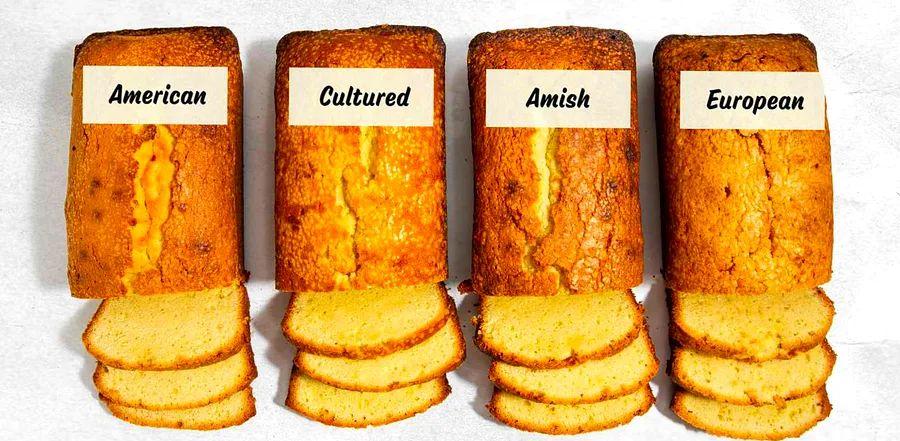Does Premium Butter Make a Better Cake? We Tested Four Varieties to Find Out

Butter isn’t just the perfect complement to fresh bread or pasta with Parmesan, salt, and pepper; it’s also a key player in baking. It brings structure, tenderness, and richness to cakes, cookies, pastries, and more.
Which Butter is Best for Your Baking Projects?
With so many butter varieties available, you may wonder if it really matters which one you choose—not just for your table, but for baking too. In the past, it was a simple choice: salted or unsalted (unsalted is recommended for baked goods to control salt levels).
But these days, the dairy aisle is packed with options. Should you opt for American-style butter, Amish butter, cultured butter, or one of the European varieties? What’s the difference, and which one should you pick?
To determine if one type of butter truly elevates baked goods, we ran a flavorful test: We baked Grandmother's Pound Cake using American, cultured, Amish, and European butters to find out which one makes the best cake. Let's take a closer look at each butter type before we dive into the results of our taste test.
What Classifies Different Types of Butter?
Butters are categorized by their butterfat content, with most varieties falling between 80% and 85%. Generally, the higher the butterfat, the richer the flavor.
The Four Butters We Tested
American-style Butter: This is the butter most familiar to those in the U.S., with a mild, neutral flavor. By USDA standards, American butter must contain at least 80% butterfat.
Amish Butter: Amish butter has a higher butterfat content than American-style, usually around 85%. This higher fat percentage, combined with its slow-churning process, gives it a smooth texture and rich, creamy mouthfeel.
Cultured Butter: Made by adding live cultures to cream before churning, cultured butter undergoes fermentation, resulting in a tangy flavor, much like the taste of yogurt.
European Butter: European butter has different standards, with a minimum butterfat content of 82%. These butters are typically cultured, contain less water than American butter, and offer a rich, creamy taste.
Our Butter Taste Test Results
We used Grandma's Pound Cake recipe to test each of the four butters and evaluate them on structure, flavor, and tenderness. Here’s what we found out:
1st place: It’s a three-way tie between Amish, cultured, and European butters. Each brought something special to the table. The European butter provided a rich, creamy texture, while the cultured butter added a delightful tang. The Amish butter struck a perfect balance between the two. All three were so exceptional that we couldn’t pick just one winner.
2nd place: American butter. While it wasn’t bad by any means, it simply didn’t match the richness and complexity of the other three. We might not have noticed this difference if we hadn’t compared them head-to-head.
The Bottom Line
The type of butter you choose does make a difference, but not by a huge margin. We preferred the results with Amish, cultured, and European butters, though the American butter loaf was still tasty. Fancy butters can be pricey and might not always be worth the extra cost for baking, says Ashley Manila, blogger at Baker By Nature. She opts for unsalted American butter for its availability, affordability, and consistency. Save the high-end butter for spreading on toast or English muffins to really savor it.
Evaluation :
5/5



